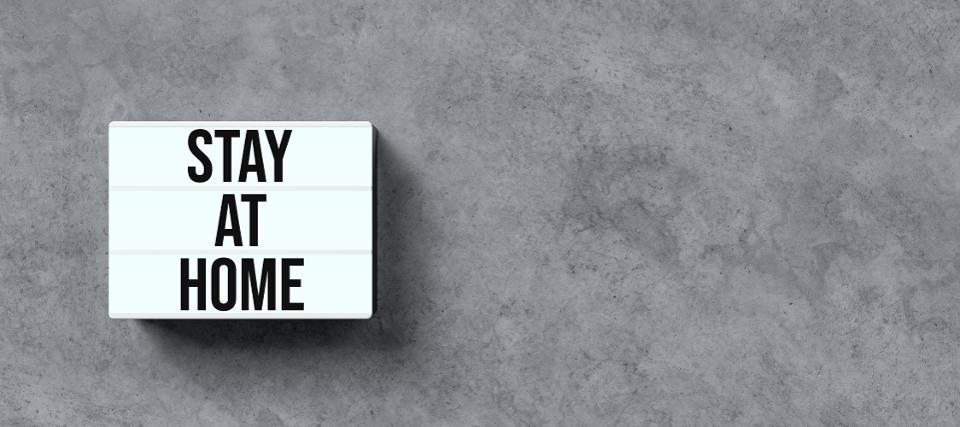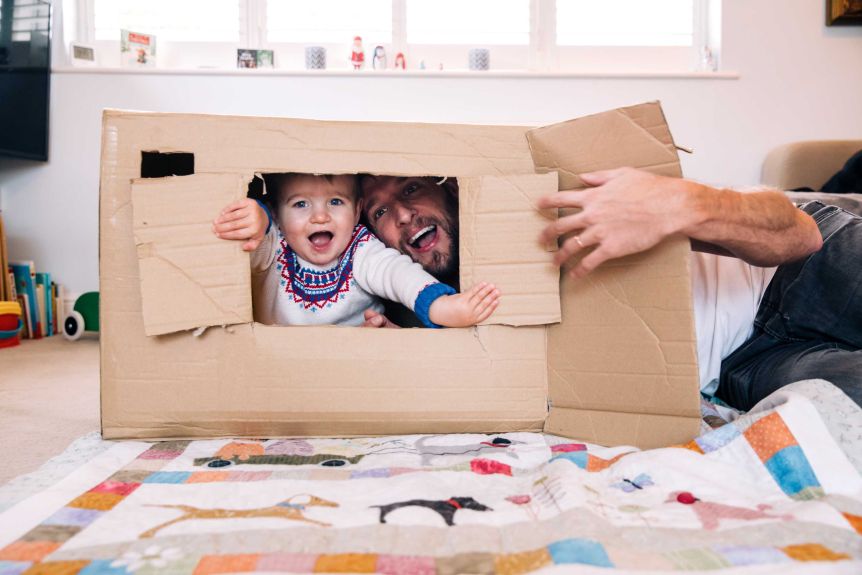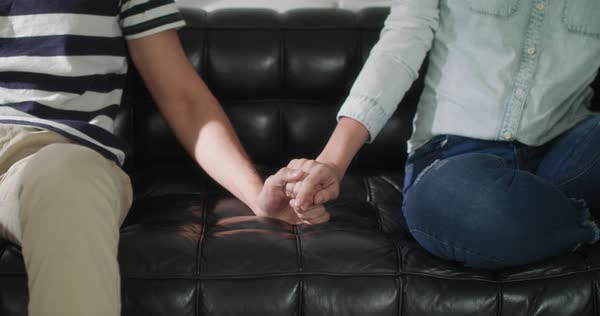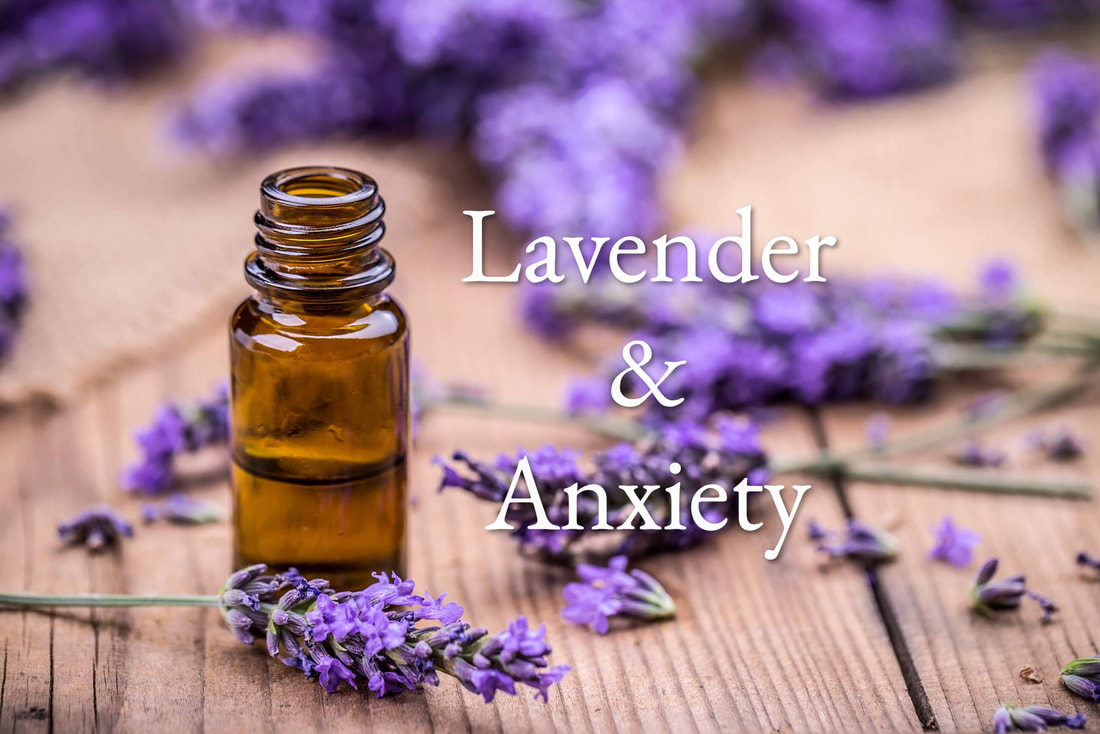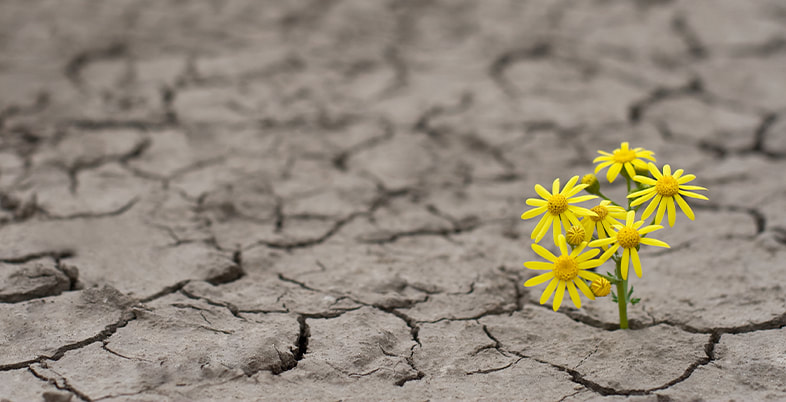|
Originally on bnnbloomberg.ca by Jon Erlichman.
The COVID-19 pandemic has made us increasingly stressed out, according to a study by the behaviour change technology company, Thrive Global. Eighty-five per cent of the study’s respondents reported significantly more stress and anxiety as a result of public responses to the coronavirus pandemic. Arianna Huffington, a media entrepreneur and author, launched Thrive in 2016, following her own experience with burnout. HuffPost (formerly The Huffington Post), which she founded in 2005, became a leading online news and opinion site and was sold to AOL in 2011 for US$305 million. Despite her financial success, her own personal wake-up call came when a lack of sleep resulted in her falling and breaking her cheekbone. Huffington, who served as an early board member at Uber and has long-served on the board of the private equity firm Onex Corp., is not alone in her desire to tackle issues such as work-life balance. Thrive Global’s early investors have included high-profile backers ranging from Alibaba Group Holding Ltd. founder Jack Ma to NBA basketball player Andre Iguodala. As for navigating stress during COVID-19, Huffington has some recommendations. Here’s our full email Q&A. Some answers have been edited and condensed. Q: We all seemed stressed out these days. Does the data support that? A: Yes. In fact, 85 per cent of participants in a Thrive Global study report significantly more stress and anxiety as a result of public responses to the coronavirus pandemic, while less than 30 per cent are confident in their abilities to manage their mental health and psychological well-being. We’re seeing a surge in stress at precisely the time when our ability to manage stress is more important than ever. Stress is a big suppressor of our immune system. And stress, of course, has cumulative effects on other factors that directly impact our immune response: our ability to fall and stay asleep, and on our impulse to stress-eat or drink too much. The coronavirus paradox here is: every day we are exposed to a constant stream of coronavirus news, but instead of easing our worries, the flood of information about new cases, some of them close to our homes, event cancelations, stock market drops, etc., only makes us more stressed, which in turn suppresses our immune system. Q: We might have individual health or financial concerns, but is there a common stress thread for everyone? A: There are certain universal concerns and themes. This is a historic time of uncertainty, not limited to any one population or community, but affecting all of us. There’s also the impact on our collective mental health. Even before COVID-19, we were already in the middle of a mental health crisis. Worldwide, over 264 million people were struggling with depression, and in the U.S. alone, nearly 50 million adults had experienced some form of mental illness in the past year. And now, long periods of isolation, the loss of loved ones, the loss of jobs, financial insecurity and the daily stress of our new normal are accelerating that mental health crisis. Just as we’ve had to make drastic changes to our lives to stop the spread of the virus, we need to take urgent steps to safeguard our mental health, too. Q: Thrive was built on the idea of re-thinking how we work and live. With that said, what should people be thinking about on that subject as they are forced into this period of change? A: We should be thinking about how we can use this time to shift our entire culture away from an always-on, perpetually stressed-out, fight-or-flight state of being and reconnect with some essential truths we have forgotten. Just a few weeks ago, as we went about our busy lives — talking about how slammed and swamped we were with work, always on the edge of burnout — there were plenty of signposts along our path directing us to keep climbing up the ladder. But there were almost no signposts reminding us to stay connected to the essence of who we are, to take care of ourselves along the way, to reach out to others, and to connect to that place that unites us in our humanity and from which everything is possible. So one thing that needs to change if the new normal is to be better than the old one is that we stop living in the shallows — that we stop hurting our health and our relationships by striving so relentlessly and breathlessly after success as the world defines it. Q: You often talk about burnout. What is your advice for those who fear burning out in this period of limbo before life returns to a version of normal? A: The most important thing we can do right now is to remember the in-flight safety presentations that always instruct us to secure our own oxygen masks before helping others. Taking care of ourselves is the most essential thing we can do in order to care for others. We have all now been forced to pause. And during this pause, we are discovering that certain parts of life were not as essential as we thought — and just as important, rediscovering certain essential parts we had forgotten. It’s a kind of Marie Kondo exercise for our whole life, stripping away what is not needed and moving to our more essential nature We also need to take microsteps — small daily steps — to recharge. It’s far too easy to get caught in a cycle of endless work that leads to burnout. Here are some examples:
Q: What about our devices? And our screen time? It seems unavoidable that we are going to be spending more time online. How do you manage that? A: We shouldn’t judge ourselves for finding comfort and connection in our screens. But time away from our screens is more crucial than ever now for recharging our bodies, minds and souls — especially when it comes to strengthening our immunity, managing anxiety, connecting with ourselves and building our mental resilience. My favorite microstep to help with this is setting a news cut-off time at the end of the day. While being informed can help us feel more prepared in a public health crisis, setting healthy limits to our media consumption, especially before we get ready for bed, can help us have a restorative night’s sleep, which in turn will help us and put the stressful news into perspective. Originally posted by Kelly Campbell Ph.D on psychologytoday.com. Being with a partner 24/7 is challenging for most people. Adding to that is the stress of COVID-19, which can include financial hardship, challenges related to childcare and homeschooling, and potentially coping with illness and death. This article outlines relationship tips to ease the tension. The suggestions are for couples who are in generally healthy relationships. I recognize that some people are dealing with intense stressors such as domestic violence. Those individuals may want to skip to the end of the article and use the information provided to secure professional help. In the meantime, here are my tips for maintaining the peace and even helping your relationship thrive during this crisis. 1. SAY I LOVE YOU This seems so basic and it is. You should tell your partner that you love them every day. If you don’t feel like saying it, maybe you have some unaddressed frustrations that have built up over time. In that case, focus on the best qualities in your partner, what are they doing right? How are they being helpful? Reflect back on what made you fall in love in the first place. Try to be as kind as possible and do things that show you care such as bringing them a drink or snack, asking if they need a massage, or anything you can think of to extend the olive branch. These kind acts should elicit a positive response, and as the relationship improves, you might find an appropriate space for addressing past frustrations. But keep in mind that some couples thrive without needing to address all their issues. By increasing their positive interactions, the negatives become less important. Change occurs slowly and if your relationship wasn’t in a good place before this pandemic, the quarantine may have exacerbated the problems. As you move toward a more stable and healthy place, the “I love yous” will hopefully follow. 2. CHOOSE YOUR BATTLES You are going to get annoyed with each other, that’s a given. No two people can be with each other ALL THE TIME and get along perfectly. But some things are better left unsaid or unaddressed. There is no need to point out that your partner left some bits of cereal on the counter, it won’t do any good. So, choose your battles wisely, especially during this stressful time, and leave things unsaid that won’t serve a relationship-enhancing purpose. Importantly, try not to repeat suggestions or criticisms over and over, it is a sure way to drive your partner crazy. There may be some real issues to address, and you can decide which of those are imperative to tackle, but if something does not need addressing, and especially right now, either drop it or wait until other pressing stressors subside. And don’t underestimate the power of perception: If you can’t change your partner’s annoying behaviors, changing your perception of them can go a long way toward improving your well-being. 3. DO YOUR PART The happiest relationships are those in which the housework is shared. In some relationships, one person is the breadwinner and the other mostly does domestic work. But even in those relationships, partners are happiest when both are contributing to the chores and childcare. One of the biggest predictors of women’s happiness in a relationship is whether her partner contributes significantly to housework. Openly communicate with your partner about a division of labor that suits your needs. For some couples, this might involve alternating between morning and evening shifts or assigning chores to different days so that schedules can be accommodated. Be considerate towards your partner and talk through options to find a solution that is agreeable for both of you. Doing your part doesn’t have to start and end with housework, it can also apply to things like saying “I love you” and planning stay-at-home date nights. A healthy relationship is not one-sided, it takes two. Make sure you are doing your part to keep things positive, functional, and enjoyable. 4. BE KIND TO YOURSELF This may seem like an odd thing to suggest in an article about relationship improvement but if you do not take care of yourself, it will be difficult to care for others. You could end up giving too much at the expense of your own well-being or risk damaging your relationship because you say or do something that stems from unhappiness with yourself. Taking care of your physical and mental well-being is essential, especially during this crisis. If you are able to get some alone time for self-care (e.g., gardening, reading, writing, taking a bath), do it. If not, you can still do things like meditating or praying when you lay down to sleep, doing your best to eat right and get enough rest, and fitting in some exercise — think YouTube workouts, running in the back yard, doing squats and lunges, daily stretches, etc. Importantly, don’t engage in negative self-talk or ruminate about things. If you find yourself doing this, think about the way you would treat or talk to a good friend and apply the same guidelines to yourself. Treat yourself with kindness, recognize that things are challenging right now, that you can’t do everything, and that’s okay. 5. PRIORITIZE SAFETY AND EACH OTHER During this dangerous time, both partners must do their part to keep each other and the family safe. If one person is being vigilant while the other is not, then both are at risk. Safety means staying home unless absolutely necessary, wearing protective gear when going out (face mask, gloves), keeping distance from others, regularly washing hands and clothes, and sanitizing products that come in from the outside. During this time of crisis, conflict will ensue if couple members are not aligned in their efforts to stay safe. Taking precautions will also reduce the risk that one or both partners will have to cope with illness or even worse, death. In many relationships, one or both people are working outside the home. Be especially considerate in such cases. People are under tremendous stress if they are unemployed and yet those on the front lines are also experiencing extreme stress. Check in with your partner regularly to ask how they are doing and how you can help. Work as teammates to stay safe and get through this crisis together. This post is originally found at psychology today.
The pandemic has put a spotlight on the mental health crisis in a new and immediate way—a way that cannot be ignored. The stress, anxiety, isolation, and uncertainty of this time are not only raising awareness but pushing us as individuals and as a society to have the honest conversations we always needed to have about mental health—especially when it comes to taking action. This Mental Health Month, we have an opportunity. As the pandemic accelerates a mental health crisis that already existed, we can take steps to identify our own individual signs and stressors. And as a society, we can emerge into a new normal where we are much more open about the challenges we’re facing and committed to course-correcting in ways we desperately need. Two key developments make this opportunity possible. First, the pandemic has exposed the unsustainable ways of working and living that are fueling the current mental health crisis. Many of us are struggling with the boundaryless “permawork” of working from home. Employers are being forced to admit what working parents have always known—that parenting is a round-the-clock job. Meanwhile, first responders and frontline healthcare workers are not only risking their physical health but facing extreme mental health challenges, as recent reports of suicides make tragically clear. Speaking to Business Insider, Dr. Shauna Springer, a psychologist and trauma recovery specialist, compared these workers to “warriors in the war zone, taking risks, seeing their colleagues fall ill and potentially die, losing patients.” The second key development is that we now have the science to help us identify our signs, stressors, and solutions. Today, we know more than ever before about the brain’s connection to our mental health and how we manage stress. And this modern science is validating ancient wisdom. A great example is the Roman emperor Marcus Aurelius, one of Stoicism's most famous practitioners. For Aurelius, the quality of our day is up to each one of us. We have little power to choose what happens, but we have complete power over how we respond. It all starts with setting the expectations that make it clear that no matter how much hardship we encounter—how much pain and loss, dishonesty, ingratitude, unfairness, and jealousy—we can still choose peace and imperturbability. And from that place of imperturbability—or ataraxia, as the Greeks called it—we can much more effectively bring about change. These principles are at the heart of Thriving Mind, the mental health program Thrive Global created in partnership with Stanford Medicine. Thriving Mind helps us understand the different ways we all respond to stress and anxiety and gives us personalized strategies to spot the signals in ourselves, respond to and course-correct from stress and anxiety, and build mental resilience, which is more important now than ever. Dr. Leanne Williams, Director of Stanford’s Precision Mental Health and Wellness Center, has used high-definition brain imaging technology to characterize eight different kinds of “short circuits” that occur in the brain when we experience persistent negative stress we feel we can’t control, called biotypes. Understanding the thoughts, emotions, and patterns associated with each biotype helps us understand the moments and scenarios when we struggle most and what actions we can take to help manage our stress or anxiety. RUMINATION We all have inner thoughts and moments of reflection. We all worry. But do you ever find yourself stuck in a loop of brooding self-reflection that you can’t get out of? To the point that it negatively affects your life and keeps you from being productive, finding joy, and going about your day? That’s rumination. This is characterized by extreme brooding and dwelling on negative thoughts and worries, which can result in feeling paralyzed and worthless. NEGATIVE BIAS This bias occurs when we find ourselves stuck in a cycle of negative thought patterns. As a result, our capacity to receive positive information gets shut down. Our brain is naturally hardwired to react more quickly to negative than to positive information—this is actually necessary for our survival, not only physically but also in other settings like the workplace. Usually, negative reactions also resolve quickly. But negative bias occurs when negative reactions persist and we end up catastrophizing and getting stuck in a negative reaction loop. THREAT RESPONSE The threat response is a specific form of negative bias where our fight or flight response actually stays on and in alarm mode. Normally, our brain returns back to its usual baseline after a threat-related event. But imagine an extreme form of feeling fight or flight, possibly triggered by some kind of trauma, and you find yourself stuck in alarm mode and unable to recover. ANXIOUS AVOIDANCE In anxious avoidance, the salience circuit of the brain becomes extra tuned into internal changes—like physical signs of anxiety or pain—as well as to external changes in the world around us, like new social situations or sounds. We can end up feeling overwhelmed with stimulation and may want to dampen it down by avoiding and getting away from sources of stimulation. Think about someone who is hypersensitive to light or sound, or fearful of social situations, speaking in public. Anxious avoidance is an extreme version of that behaviour. COGNITIVE FOG Cognitive fog arises from a disruption in the circuit involved in conscious will—the one used to control our thoughts and actions in response to current goals. If you undergo a period of sustained stress and the source of that stress is not in your control, this circuit will be under pressure and cognitive fog might appear. In this situation, your brain may feel foggy rather than sharp. It’s hard to execute on decisions, to implement tasks at work and home, to plan ahead, and to regulate unwanted reactions. INATTENTION Then there’s inattention. We don’t typically associate inattention with depression or anxiety, but it’s quite common. Think about the times you’re experiencing negative stress or feeling anxious—it’s really hard to concentrate, isn't it? Your capacity to sustain attention over time is disrupted. Basic functions at work and at home may become extremely difficult or impossible. It may feel quite exhausting to pay attention to the task at hand. EMOTIONAL NUMBNESS This refers to a loss of the ability to feel pleasure from usual activities and goals. It can develop when we are under intense and chronic stress that leaves us feeling emotionally numb. In this situation, you can imagine how the brain’s capacity to respond to anything positive is burned out. We feel empty and not able to get pleasure from social interactions or to feel meaning or purpose in life. With emotional numbness, we might find ourselves overindulging in food or alcohol in an attempt to feel any emotion at all. Right now, the growing fear and anxiety are leading people to find solace in addictive behaviours: The CDC warns that the outbreak can lead to increased use of alcohol, tobacco, and other drugs. Online alcohol sales went up 243 percent in mid-March [Nielsen] Everything that we used to get excited about doing may now feel like a drag and an effort. We may feel like we are going through the motions. Even in this situation, many people are still able to function like high performers at work. They may pay the price by collapsing at night and shutting down the rest of their lives. CONTEXT INSENSITIVITY Context insensitivity is a very particular form of emotional numbness. Normally we have different contexts in our life (though right now, of course, it might seem like they've all been collapsed into one context: our home). We have our work, our family, our friends, our hobbies, and so on. But with context insensitivity, there is no sense of context between the different domains in our life. Normally, there are different things that motivate us to do something—something that might give us a burst or sense of energy that motivates us to keep moving through our day—maybe a project at work, or a forthcoming vacation. But if context insensitivity develops, motivation and context are lost. And this can take us into a deep state of burnout. Once you understand these biotypes, you can take action using recharge strategies and small daily steps to build the mental resilience to help you navigate this new normal. Some of these micro-steps have even been found to specifically help certain biotypes, but every micro-step will help strengthen your mental resilience. Here are a few:
Below is a list of both entertaining and isolating online activities you can do while doing your part to combat COVID and sheltering at home.
ONLINE PERFORMANCES In times of uncertainty, the arts have always been there! Cozy up at home and watch these stellar performances from the comfort (and safety) of your living room.
VIRTUAL MUSEUM TOURS While most museums are closed to the public, many are still available for online visits! The following museums have put their partial or full galleries online:
LEARNING AND EDUCATION Here are multiple ways to exercise your brain and learn some new information for as little as five minutes a day!
VIRTUAL FIELD TRIPS Even at home you can travel and learn new things. Below are a few locations offering online "field trips". Originally posted at goalcast.com by Seth Shugar. THE VIRUS GAME For the last couple weeks, the most popular game in our home has been something our kids call “the virus game.” In this game, our kids, five and eight, make me an incompetent, bumbling virus who’s on a seek-and-destroy mission to catch them. Only, I’m never quite able to accomplish my diabolical objective because they are constantly outrunning and outwitting me. I chase after them, bearing down on them while they giggle and laugh until, at the last possible second, time and again, they make a daring last-second get-away. Most of the time, they also wind up blindfolding me so as I’m pursuing them I’m also stumbling over laundry baskets, bumping into walls, walking into doors and sometimes falling on the floor like a klutz, howling in exaggerated pain while they laugh and giggle. Sometimes, when I finally do manage to nab one of them, I cackle like a triumphant super-villain, until I suddenly realize that what I have in my hands is not a child but a teddy-bear or a pillow. As I shake my fist, cursing them for fooling me once again, they laugh and snicker and snort. Other times, I do catch them but they freeze in my arms, bamboozling me into believing they’re teddy bears, so I foolishly let them go and they scamper off giggling at the dumb virus. Indignant, I bolt after them, but because I can’t see, I accidentally run head-long into the closet or the bathroom and they, of course, promptly slam the door behind me. I feign fear of the dark, begging and pleading to be let out, but they usually show me no mercy. While I try desperately to escape, bonking head-first into the door over and over again, they howl with laughter outside. Then, clumsy and inept germ that I am, I usually wind up infecting myself somehow and die alone in the closet. In this way, our kids seem to gain a sense of power and control over the scariest thing in their world right now. PLAY IS THE MOST POWERFUL ANTIDOTE TO FEAR Play is the universal language of childhood. It’s spoken in every country of the world. It’s how kids communicate. Asking them to stop playing is like asking an adult to stop talking on the phone or drinking coffee. It’s also one of the very best tools we parents have at our disposal to improve cooperation, boost confidence, relieve boredom, soothe sibling rivalries, and provide an outlet for their aggression. Like wipes or a trusty old Swiss Army Knife, it always comes in handy, but it’s especially helpful and important in times of crisis when stress starts to mount in the family or society. As Lawrence Cohen explains in his wonderful book Playful Parenting, “Play is where children show us the inner feelings and experiences that they can’t or won’t talk about.” How many kids do you know who are sitting down at the dinner table these days and saying, “Mom… dad… I’m really worried about this whole COVID-19 situation. Can we talk about it?” Probably not too many. Instead, most kids I know whine, lash out, mope, hang their heads, or just say, “Wanna play?” Play is how kids recover from the considerable stresses and strains of their pint-sized lives. When tensions run high, it functions like a pressure-release valve. It lets them discharge fear, lower stored tensions, offload whatever feelings they’ve tucked away, scrub out stress, and shed old hurts. Parenting expert Patty Wipfler puts it better than anyone when she says, “The most powerful antidote to fear is play.” DESPERATE TIMES CALL FOR PLAYFUL MEASURES Most of us parents already play with our kids. We horse around with them, roughhouse, act like goofballs, make silly jokes, give them the gears. This is all great stuff. But desperate times call for more playful measures. In times like these, the play that offers our kids the greatest outlet for their tensions and fears is the kind where they can invent precisely the types of games that will let them work on whatever it is they most need to work on. In the Hand-In-Hand parenting model this particular kind of play is called “Special Time.” Special Time is as simple as it is effective. You just set aside some time to play whatever your kid(s) want to play and then you give them warm, high-quality attention while they take the lead and you act a fool, looking for the slightest opportunity to make them giggle or laugh. It helps to kick off a session of special time by naming it, saying something like, “Okay, it’s special time. We can play anything you want, as long as it’s safe.” Then you set a timer, starting out with as little as 5-10 minutes a pop a few times a week, and let them take charge and just see where it takes you. While you’re playing whatever they want, you just delight in them, offering them extra warmth, extra eye contact, and showing extra interest in their choices. You don’t offer advice, try to teach them, or modify their ideas. You just do what they want while remaining on the look-out for opportunities to make them bust a gut. Why? Because giggling and laughing are two of the main ways kids (and adults!) release their lighter tensions. This is why Patty Wipfler calls “play-with-laughter” the “frosting on the cake of play.” It’s also why she recently emphasized, “You want lots of frosting in times like this.” HOW TO MAKE KIDS CRACK UP One of the best ways to tickle a kid’s funny bone is not by tickling but by giving them the upper hand and letting them play the more powerful role while you act like a bumbling, inept klutz who gets everything wrong and loses every time. Think of the characters who have been making kids of all ages laugh their heads off since celluloid was first invented: bumbling Charlie Chaplin, clueless Costello, insufferable Sylvester the Puddy-Cat, hair-brained Wile E. Coyote, clumsy Kung-Fu Panda, inept Mr. Bean, bumbling Bernard, the incompetent burglars in Home Alone, any garden-variety birthday clown. Nothing gets a good chuckle out of a kid like giving them the power-position and letting them watch while the adults around them fumble and fail. It only makes sense. After being told to keep quiet, sit still and follow the rules all day, they need a bit of relief from being bossed around and made to feel smaller, weaker and less competent than grown-ups. Here’s a classic example of how and why it works. A four year-old comes home from getting a shot at the doctor’s office, and what does she want to play? Doctor, of course. And who does she want to be in this game? Not the patient, that’s for sure. She wants to be whoever gives the dang shot. And who’s she going to give it to? You, of course: her mom or dad or caregiver. In a pinch, she’ll take a toy or a stuffy. How does she want you to react when you get your shot, over and over again? She wants to hear you plead and yelp: “Noooo! Please don’t give me a shot. I hate shots. Ouch! Ow! Ouch! Ow!” It’s a simple game of role reversal – the one who got the shot is now giving the shot – but it does the trick. Your fear lets her be in the more powerful position and recover from her shot because she gets to see you as helpless, while she is in the position of power. (For an amazing grab-bag of other ideas to kick-start your play, check out The Art of Roughhousing by Anthony DeBenedet and Lawrence J. Cohen. For a more thorough break-down of how and why to do Special Time, see Patty Wipfler and Tosha Schore’s fabulous book Listen. For direct instruction on Special Time from a living master of the art, contact Isaac Romano.) FILL UP YOUR OWN CUP, SOMEWHAT But wait. I know what you’re probably thinking. In addition to providing the kids a good-enough balance of structure, stimulation and connection, in the midst of all this fear and boredom and uncertainty, while trying to hold down a job, play teacher and keep the house in some semblance of order, this jerk is suggesting, to top it all off, that I play more with my kid(s)? Yup. That’s exactly what I’m saying. But not until you fill up your cup, somewhat. In other words, to give your kids the kind of warm, relaxed presence they need from you, you need to be as grounded and resourced as possible, under the circumstances. A “Listening Partnership” is probably the best tool available to help you replenish your energy for parenting, but it’s also worth bearing in mind what Lawrence Cohen points out: “When we are exhausted, or when we are at the end of our rope, we tend to think that play will just be an energy drain.But when we engage playfully with our children, we find we have more energy, both for fun and for finding creative solutions to thorny problems.” Nor can it hurt to know that after Patty Wipfler repeats that “the most powerful antidote to fear is play” she almost always adds, “It’s true for your child. It’s true for you.” Originally posted by Kara Fletcher, Assistant Professor, Faculty of Social Work, University of Regina and is republished from The Conversation under a Creative Commons license. Read the original article.
Lavender is an herb that has been proven effective by leading researchers as a natural remedy for treating signs of anxiety. In a study published in the journal Phytomedicine, lavender oil was shown to be just as effective as the pharmaceutical drugs used to treat anxiety such as lorazepam (Ativan). Furthermore, lavender oil showed no sedative effects (a common side effect of lorazepam) and it had no potential for drug abuse or dependence. Other studies have confirmed the anti-anxiety properties of lavender as well as offered up many other medicinal benefits, such as:
|
Categories |



